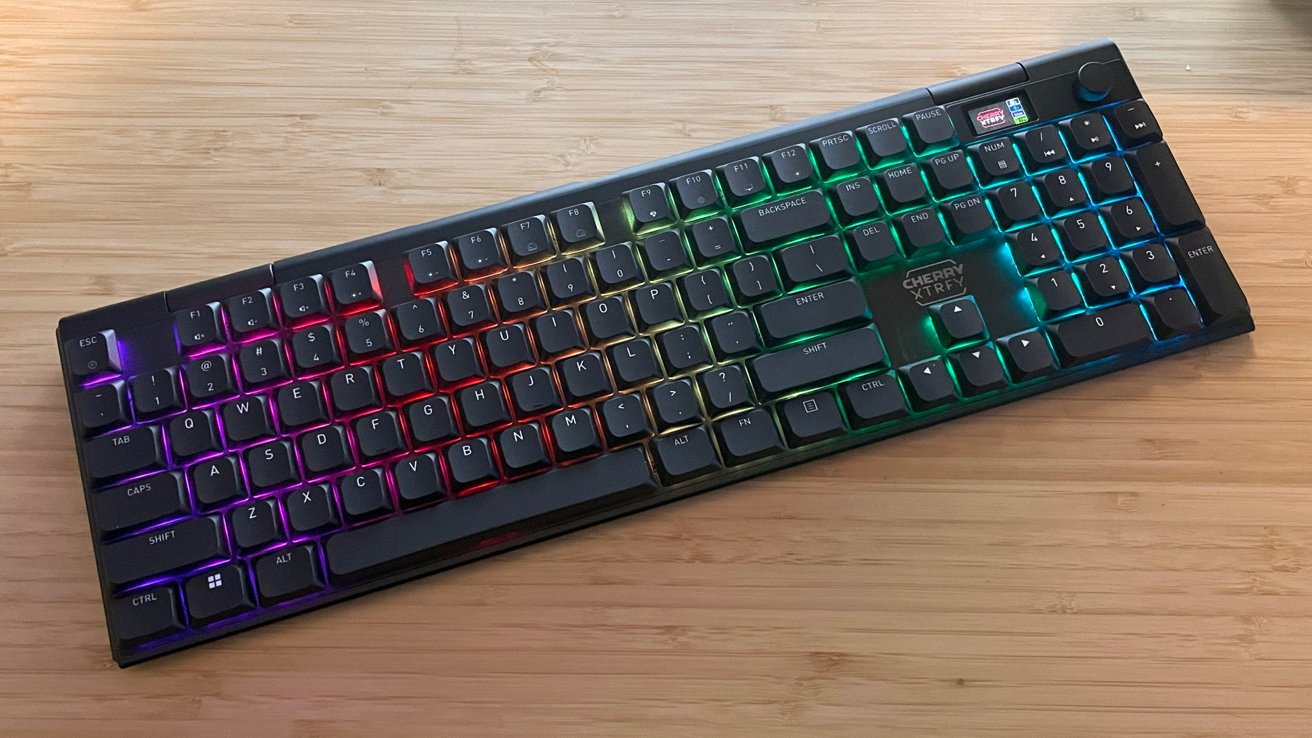Cherry, a pioneer in the keyboard manufacturing industry since the 1950s, has consistently delivered high-quality peripherals. Their latest offering, the Cherry XTRFY MX 10.1, is a full-sized, low-profile mechanical keyboard designed for both macOS and Windows users. Over the course of a month, I integrated the MX 10.1 into my daily routine to evaluate its performance, build quality, and overall user experience.
Unboxing and First Impressions
The MX 10.1 arrives in a robust box adorned with Cherry’s signature red and black branding. Available in two color schemes—black with black keycaps and silver with white keycaps—the keyboard caters to diverse aesthetic preferences. Inside the package, you’ll find the keyboard itself, a USB-A to USB-C cable, a USB 2.4GHz dongle, and a user manual.
Specifications at a Glance
– Layout: 100% QWERTY ANSI US Layout
– Connectivity: Wired (USB-C), 2.4GHz wireless, Bluetooth 5.0
– Dimensions: 16.81in x 5.28in x 1.06in
– Weight: 39 oz.
– Case Material: Anodized Aluminum
– Keycaps Profile: DSA Low-Profile
– Keycaps Material: PBT Plastic
– Switches: Cherry MX Ultra Low-Profile 2.0 Tactile
– Hot-swappable: No
– Adjustable Feet: Yes
– RGB Backlighting: Per-Key South-Facing LEDs with various lighting modes
Build Quality and Design
Upon unboxing, the MX 10.1 exudes durability and premium craftsmanship. The anodized aluminum case provides a solid foundation, while the smooth, legible keycaps enhance the typing experience. Adjustable feet allow users to modify the typing angle, catering to individual comfort preferences.
A standout feature is the integrated radial dial coupled with a small LCD screen. This combination enables intuitive control over volume, lighting settings, brightness, speed, multiple profiles, Bluetooth pairing, and media navigation. The LCD is bright and clear, and the rotate-and-push mechanism offers straightforward navigation through the onboard menu.
Connectivity and Compatibility
The MX 10.1 offers versatile connectivity options: wired via USB-C, wireless through a 2.4GHz dongle, and Bluetooth 5.0. Switching between macOS and Windows is facilitated by a dedicated toggle on the back of the keyboard. Pairing with multiple devices is seamless, and the radial dial allows for easy switching between up to three paired devices.
Typing Experience
Equipped with Cherry’s MX Ultra Low-Profile 2.0 Tactile switches, the MX 10.1 delivers a smooth and responsive typing experience. The keys offer soft resistance and produce a muted thok sound, striking a balance between tactile feedback and noise reduction. This makes the keyboard suitable for both professional work and gaming sessions.
Software Support and Limitations
While the MX 10.1 functions well out of the box with both macOS and Windows, Cherry’s proprietary software—Cherry Keys and Cherry Utility—are currently only available for Windows. This means macOS users are unable to customize key bindings, lighting effects, and macros through official software. However, the onboard controls and settings menu provide a degree of customization directly from the keyboard.
Considerations for Workspace Integration
The full-size layout, including a numeric keypad, requires a larger desk footprint compared to more compact keyboards like Apple’s Magic Keyboard. For users with limited desk space or those who use drawing tablets, this may necessitate workspace adjustments. The keyboard’s substantial weight and rubber grips ensure stability during use but may limit its portability.
Conclusion
The Cherry XTRFY MX 10.1 stands out as a premium mechanical keyboard that combines robust build quality with versatile connectivity options. Its tactile switches and intuitive onboard controls enhance the user experience. However, the lack of macOS-specific software support and the keyboard’s larger size may be drawbacks for some users. Priced at $249, the MX 10.1 is an investment geared towards those seeking durability and a high-quality typing experience.
Pros:
– Exceptional build quality
– Intuitive onboard controls with radial dial and LCD screen
– Smooth and responsive typing experience
– Versatile connectivity options
Cons:
– No macOS-specific software support
– Larger desk footprint
– Higher price point
Rating: 4 out of 5



